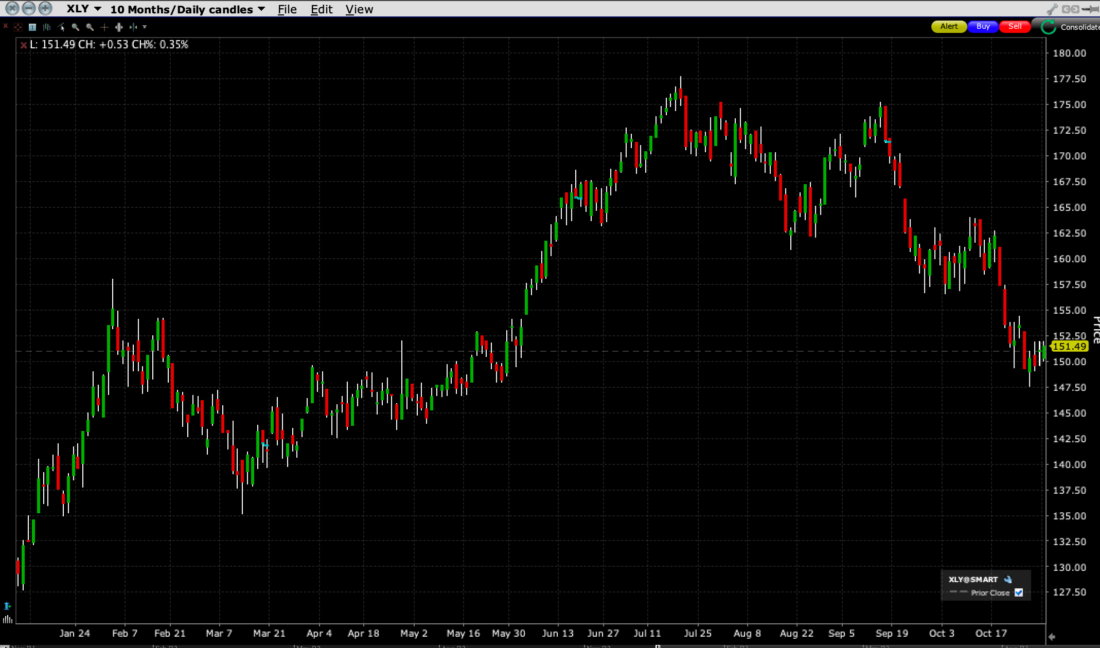A Reminder: Other Stocks Matter
It’s all too easy to focus on a limited set of outperforming stocks and lose sight of a whole raft of other key names. Sure, the “Magnificent Seven” stocks dominate market capitalization-weighted indices along with traders’ mindshare, but the economy and markets are more like a jigsaw puzzle, with a wide range of pieces that are required to finish the picture. Results from McDonald’s (MCD) yesterday and Caterpillar (CAT) today remind us of that.
CAT’s story is all too typical of this reporting season. The company handily beat its consensus EPS estimate, coming in at an adjusted $5.51, well ahead of the $4.77 estimate. Yet there were considerable sources for concern underlying that report. Revenues fell by $1.9 billion on a year-over-year basis, dealer inventories grew, and its order backlog fell by $2.6 billion from the prior quarter. As a result, the stock is down about -6% this morning.
These results are causing investors to wonder whether CAT’s results should make them concerned about the global economy. Machinery stocks like CAT have benefited from the recent Infrastructure and Jobs Act since one needs heavy equipment to build infrastructure, but it is reasonable to think that many of those purchases have been made already. There are also concerns about global growth, particularly in China, where the Manufacturing PMI for October slipped to 49.5. That was below the 50.2 prior reading and consensus, and the reading below 50 indicates contraction. One economic report is hardly a trend, but a slowing Chinese economy bodes poorly for a realm of economically sensitive sectors around the globe. The same goes for one unpleasant earnings report from a key US company, but it doesn’t bode well for a wide range of cyclical stocks.
Contrast that with yesterday’s initially mixed, but ultimately positive reaction to MCD earnings. As with CAT, MCD’s EPS of $3.17 handily beat the $2.98 consensus. Revenues were also surprisingly good, with overall sales up 14% and global same-store sales up 8.8%. Both of those were better than expected as well. The stock popped initially, as it appears that MCD was able to pass along price increases to willing customers, but then sank as investors became concerned that MCD’s growth was coming from wealthier consumers trading down at the expense of its core working-class consumers. However, the broad rally took MCD higher yesterday, along with a wide range of consumer-oriented shares.
Consumer stocks have been a disappointment this year, especially when we consider that unemployment remains low and that wages have largely kept pace with inflation. An unemployment rate of 3.8% means that the vast majority of people who want jobs have one. Yet both consumer staples and consumer discretionary stocks have generally been poor investments this year, particularly as of late. Below are the year-to-date charts of the S&P Consumer Staples and Consumer Discretionary Indices, as measured by their respective ETFs (XLP, XLY):
Consumer Staples Select Sector SPDR (XLP), 10-Months Daily Candles
(Click on image to enlarge)

Source: Interactive Brokers
Consumer Discretionary Select Sector SPDR (XLP), 10-Months Daily Candles
(Click on image to enlarge)

Source: Interactive Brokers
We can see that the staples sector is down about -8% on a year-to-date basis, and while the discretionary sector is well off its recent highs of +36%, it is still up about 18% for the year so far. But that is VERY misleading. Two stocks dominate XLY.Amazon (AMZN) and Tesla (TSLA) each make up about 20% of the index. While both of them are well off their own recent highs, each is still up about 60% YTD. That means that the other 60% of the market capitalization of XLY is lagging by a similar amount to that of XLI.
Herein lies a big problem for the economy and markets. Consumers make up about two-thirds of the US economy, and while a wide range of backward-looking and contemporaneous data appear to show a healthy consumer, forward-looking equities imply that the picture will change for the negative. Something is bound to change. Either the consumer, and hence the economy will outperform gloomy expectations, or the still-robust economy is bound to peter out in the face of continuing restrictive monetary policies and a tapped-out consumer. If the former, then consumer stocks could be a potential bargain. If the latter, then the gloom reflected in their current prices is warranted.
More By This Author:
Happy Monday So Far, With A Busy Week To FollowFed’s Inflation Gauge Rises At The Fastest Pace In Five Months
Mr. Market Plays Survivor Plus AMZN Expectations
Disclosure: The analysis in this material is provided for information only and is not and should not be construed as an offer to sell or the solicitation of an offer to buy any security. To the ...
more


